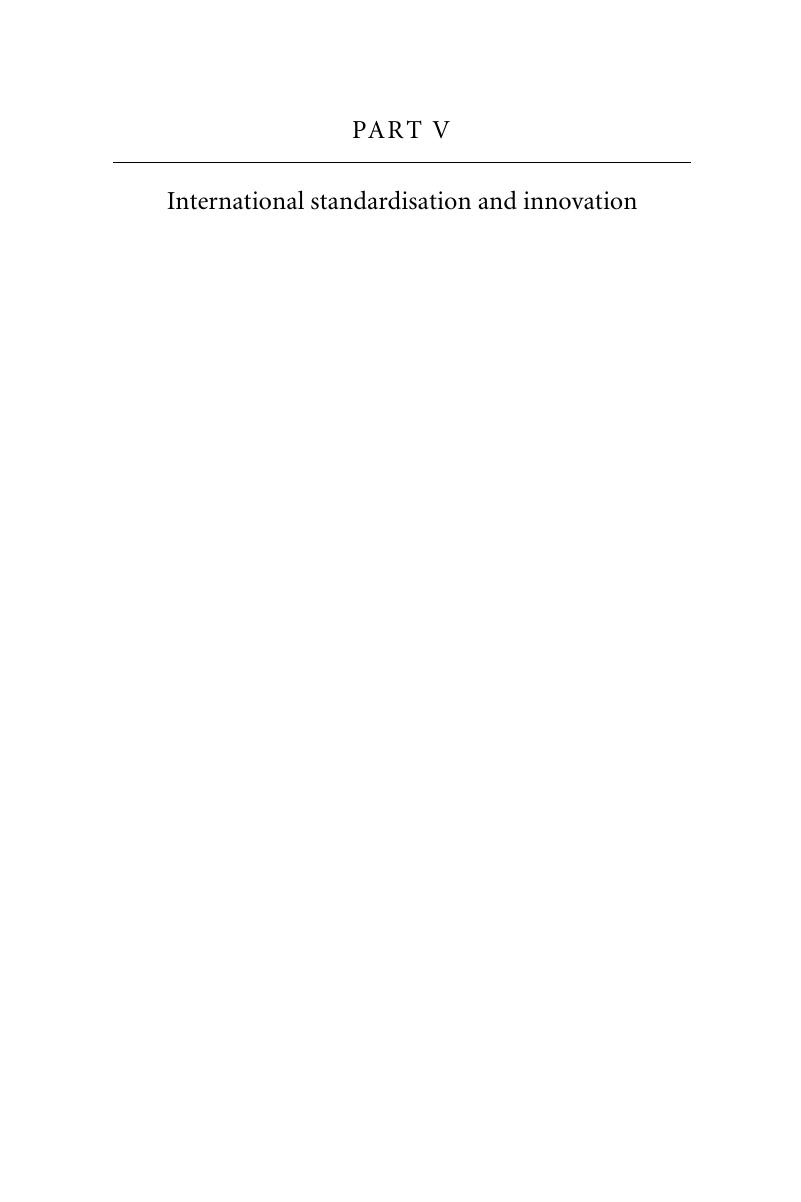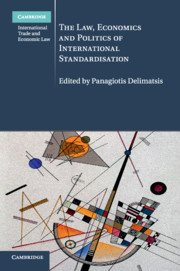Book contents
- The Law, Economics and Politics of International Standardisation
- Cambridge International Trade and Economic Law
- The Law, Economics and Politics of International Standardisation
- Copyright page
- Contents
- Figures
- Tables
- Contributors
- Book part
- Glossary
- Introduction:continuity and change in international standardisation
- Part I International standard-setting – A multifaceted and evolving area of research
- Part II International standardisation and the World Trade Organization
- Part III The politics and dynamics of international and regional standardisation
- Part IV International standardisation and development
- Part V International standardisation and innovation
- Conclusion:a future research agenda
- Index
- References
Part V - International standardisation and innovation
Published online by Cambridge University Press: 05 December 2015
- The Law, Economics and Politics of International Standardisation
- Cambridge International Trade and Economic Law
- The Law, Economics and Politics of International Standardisation
- Copyright page
- Contents
- Figures
- Tables
- Contributors
- Book part
- Glossary
- Introduction:continuity and change in international standardisation
- Part I International standard-setting – A multifaceted and evolving area of research
- Part II International standardisation and the World Trade Organization
- Part III The politics and dynamics of international and regional standardisation
- Part IV International standardisation and development
- Part V International standardisation and innovation
- Conclusion:a future research agenda
- Index
- References
Summary

- Type
- Chapter
- Information
- The Law, Economics and Politics of International Standardisation , pp. 365 - 459Publisher: Cambridge University PressPrint publication year: 2015



